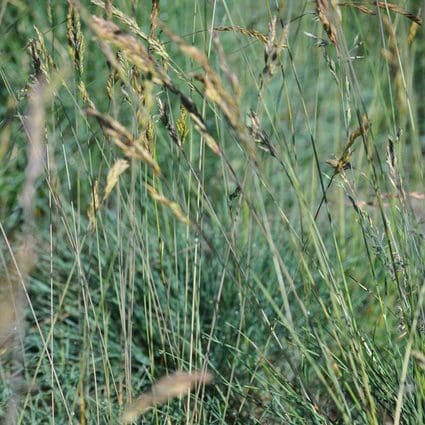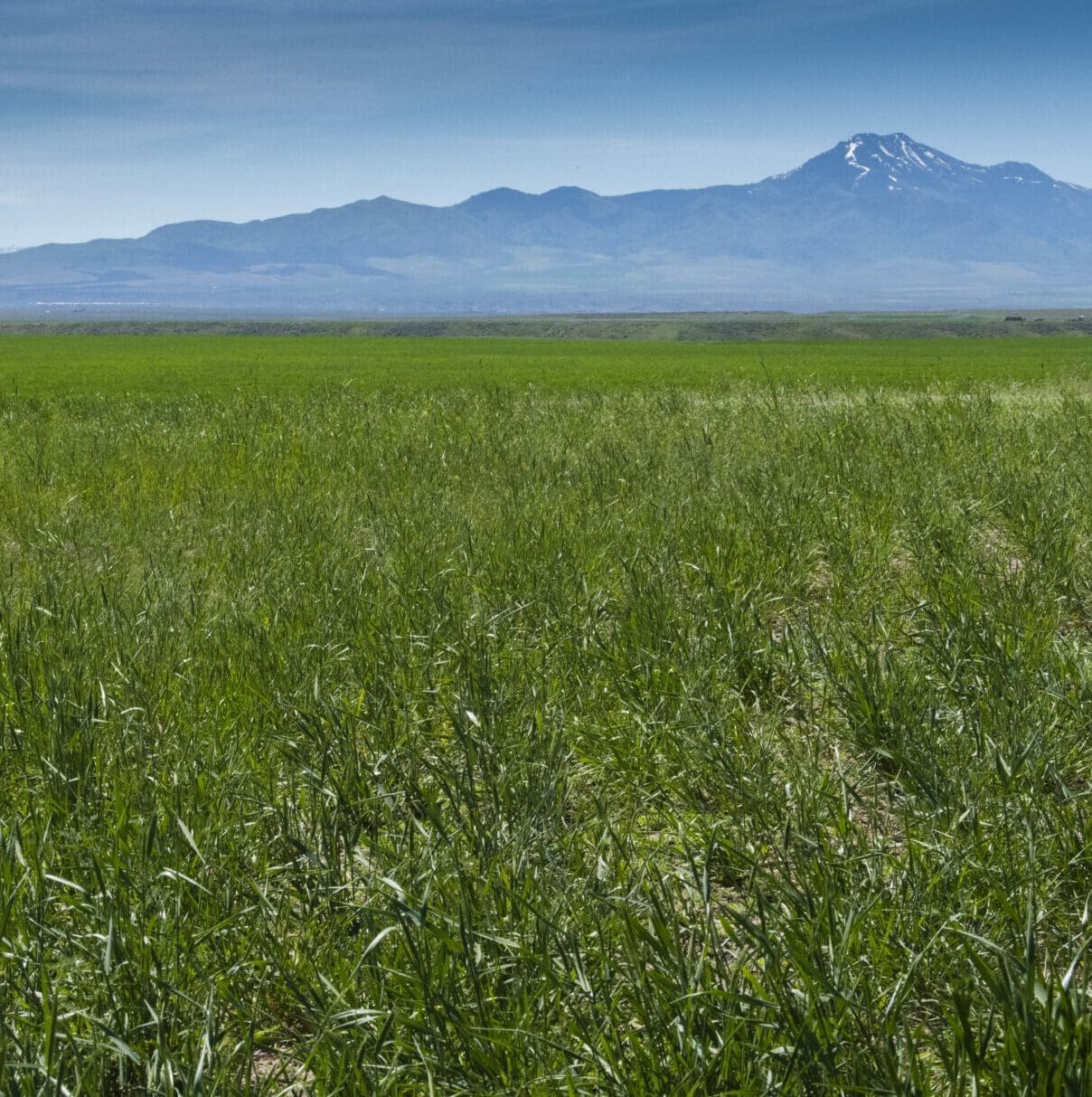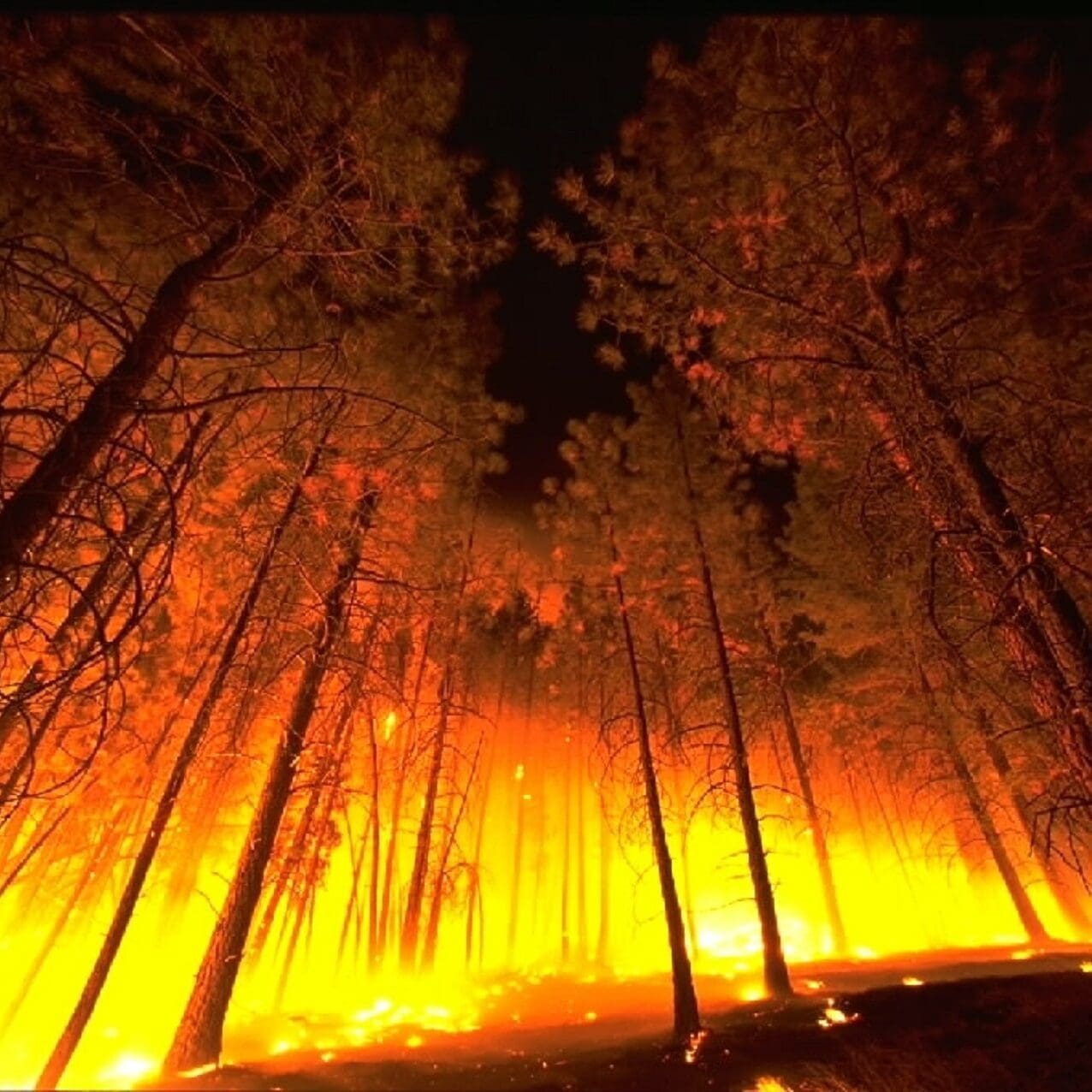Min. to Max. Annual Precipitation
12in.
Average Max. Height
Sheep fescue is a competitive grass that’s primary use is ground cover. It is an important specie for stabilizing disturbed soils because of its low growth form and its low maintenance. It has excellent cold tolerance, good drought tolerance, and moderate shade tolerance.
Sheep fescue (Festuca ovina) is a densely tufted, cool season, dwarf bunchgrass. Sheep Fescue can be found in open forests and mountain and foothill slopes from Alaska to North Dakota and south to Arizona and New Mexico. It has been introduced in many locations in eastern North America. Its good drought tolerance combined with strong bunch type root systems and adaptations to a variety of soils make this species ideal for reclamation in areas receiving 12 to 24 inches annual precipitation. This grass can be used in areas where irrigation water is limited to provide ground cover. It has excellent cold tolerance, good drought tolerance, and moderate shade tolerance. It is more drought tolerant than Idaho fescue and hard fescue. It is not tolerant of high water tables or flooding. It is often found in association with big bluegrass, mountain brome, bluebunch wheatgrass, slender wheatgrass, geranium, western yarrow, mountain big sagebrush, antelope bitterbrush and ponderosa pine. Sheep fescue is best adapted to 12 inch plus precipitation zones.
The primary use of sheep fescue is ground cover. It is ideal for stabilization of disturbed soils because of its dense root system. Its low growth form and low maintenance requirements make it ideal for ground cover purposes. It is commonly used to protect roadsides, airport landing strips, industrial and residential areas, ditch and canal banks, skid trails, clear cuts, ski hills, camp sites and other recreation areas from erosion. It provides excellent cover and erosion control in areas between trees rows of shelterbelts, windbreaks and tree farms. Sheep fescue withstands moderate equipment traffic and requires minimal maintenance. This makes it useful in vineyards, orchards, and farm equipment yards.
In rangeland and pastureland plantings, sheep fescue is a competitive understory grass that controls erosion. Although it is sometimes grazed by sheep, it is seldom utilized by cattle or horses and is not considered to be an important forage species. Due to its short dense tufts, it is not a good species for hay production.
Sheep fescue is an excellent weed control species because it has an extensive and dense bunch type root system. Once a good stand is established, it excludes the invasion of most weeds.
Sheep fescue seed should be planted with a drill to a depth of 1/4 inch or less. The single species seeding rate is 4 pounds per 1,000 square feet. If used as a component of a mix, adjust to percent of mix desired. When broadcast planting seed and for harsh critical planting areas, the seeding rate should be increased to 8 pounds PLS per 1,000 square feet. Mulching and irrigation during the establishment year are beneficial for stand establishment.
Sheep fescue “greens up” in March to early April and matures in late June to mid-July. It is a cool season plant; therefore it produces most of its growth in the spring and again in the fall, if moisture is available. Growth during the summer is minimal and dependant on precipitation or irrigation.
Synonym: Festuca ovina
***Click on the “Quick Plant Facts” tab above for more information.
Sheep Fescue NRCS Plant Guide
Sheep Fescue NRCS Plant Guide
PDF version of NRCS Plant Guide & Fact Sheet
Citation: Ogle, D., M. Stannard, P. Scheinost, and L. St John. 2010. USDA Natural Resources Conservation Service, Idaho and Washington Plant Materials Program.
Sheep Fescue (Publications & Information) Plant Species
Sheep Fescue (Publications & Information) Plant Species
PDF version from Montana State University
Animal & Range Sciences, Extension Service
From Montana Interagency Plant Materials Handbook *
By S. Smoliak, R.L. Ditterline, J.D. Scheetz, L.K. Holzworth, J.R. Sims, L.E. Wiesner, D.E. Baldridge, and G.L. Tibke
Helpful Links
Additional information about this product can be found on the academic websites linked below.
Synonyms
Many plants have more than one common and scientific name. We've listed a few of them below.
- Sheep Fescue
- Festuca ovina
- Azay
- Bighorn
- Brand
- Covar
- Elk
Who is Great Basin Seed?
Great Basin Seed is a seed company that specializes in seed sales and consultation for home, ranch, farm, range and reclamation. We have been a leader in the seed industry since 1974.
Our History
We've been in the seed business since 1974.
What We Offer
We offer seed for home, farm, ranch, range and reclamation projects.
Meet the Gang
We have the best employees in the world! We are proud of the work they do, and trust them to serve you!
Right: Company founder Lloyd and his wife Paula Stevens in a wildflower seed production field circa 1977
Quick Plant Facts
| Common Name: | Sheep Fescue |
|---|---|
| Scientific Name: | |
| Available Varieties: | |
| Plant Type: | |
| Origin: | |
| Lifespan: | |
| Seed Count | 600,000 seeds/lb. |
| Sowing Rate | 2-4 PLS lbs. per Acre |
| Best SowingTime | Spring or Fall |
| Max Sowing Depth: | |
| Min. Precipitation | 8-10 inches |
| Root Form | Bunchgrass |
| Growth Height: | |
| Growth Season: | |
| Sun & Shade Tolerance: | Intermediate |
| Elevation of Occurance: | |
| pH Tolerance: | |
| Hardiness Zones: |
Sheep fescue (Festuca ovina) is a cool-season “fine fescue”. As the name suggests, it has a fine texture that meets the aesthetic desires and water requirements of some customers. It is commonly used for lawns or ground cover, especially in less traveled areas where drought tolerance is a consideration.
Sheep Fescue is shade tolerant with a low, slow growth habit. It is the most heat and drought tolerant of the fine fescues. As a general rule sheep fescue requires far less maintenance than conventional turf grasses. It is slow growing and requires less mowing, but this can be a blessing and a curse. Slow growth means more competitive undesired species (weeds) can move in. Because Sheep Fescue is a bunch grass assumes a clumpy look, especially when unmanicured. It does not tolerate heavy traffic as well as bluegrass.











